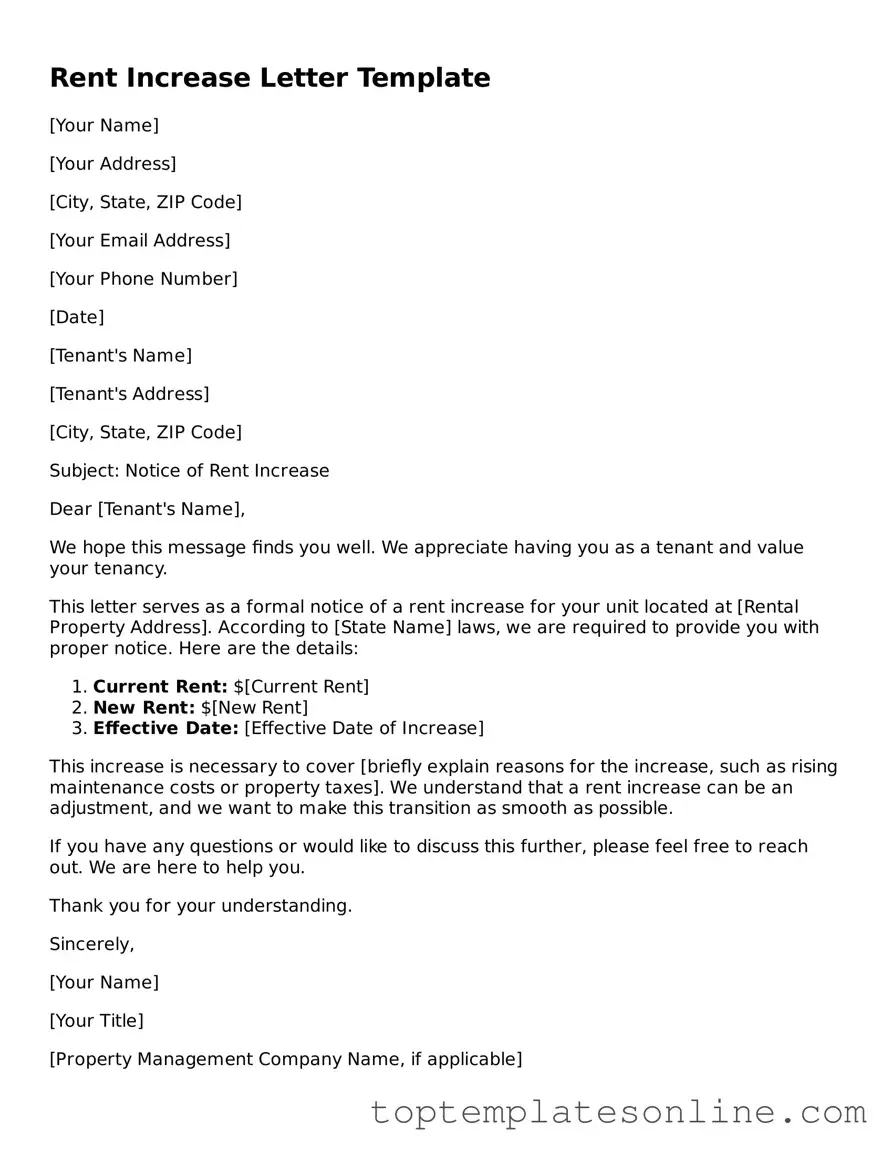Attorney-Approved Rent Increase Letter Form
The Rent Increase Letter form is a formal notification that a landlord provides to tenants, informing them of an upcoming increase in their rent. This document outlines the new rental amount, the effective date of the increase, and any relevant details that tenants need to be aware of. Understanding this form is essential for both landlords and tenants to ensure compliance with local laws and maintain a clear line of communication.
Customize Rent Increase Letter Here
